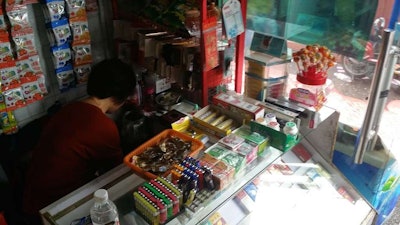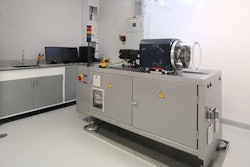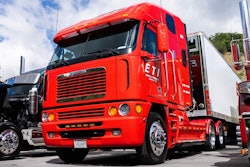In a recent trip to Shanghai, China, for Shell Lubricants’ annual global media event, we were treated to a visit to a Chinese truck stop outside of town.
And as you can guess, it was a good bit different than your average American stop.
For starters, this truck stop — deemed a tiny one — had parking spaces for about 400 trucks. According to our tour guides, it’s not uncommon for a Chinese truck stop to hold upwards of 10,000 trucks.
And of shocking absence? Fuel islands. I’m not sure if this was out of the ordinary or if Chinese truckers just fuel their rigs elsewhere, but it was quite a departure from norm in the U.S., where fuel islands basically anchor most truck stops.
Here is a brief photo essay of our visit to the truck stop:
 The entrance to the truck stop.
The entrance to the truck stop.
 This Chinese owner-operator (dubbed owner-drivers there) showed us around his rig. Like in Europe, they’re all cabovers in China, and the sleeper “berths” are more like a cot squeezed in behind the seats.
This Chinese owner-operator (dubbed owner-drivers there) showed us around his rig. Like in Europe, they’re all cabovers in China, and the sleeper “berths” are more like a cot squeezed in behind the seats.
 Roughly 70 percent of the trucks on the road in China are owned and driven by single-truck owner-operators, our guides said.
Roughly 70 percent of the trucks on the road in China are owned and driven by single-truck owner-operators, our guides said.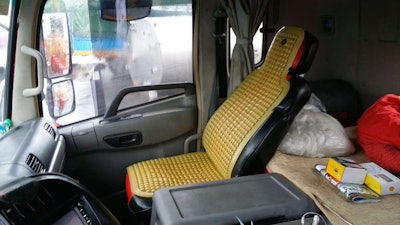
 At this truck stop, shipping containers had been turned into offices for freight brokerages. The brokers working the offices have lined up loads, and the owner-operators at the truck stop can get loads from them. Nearly all of these containers here housed broker offices.
At this truck stop, shipping containers had been turned into offices for freight brokerages. The brokers working the offices have lined up loads, and the owner-operators at the truck stop can get loads from them. Nearly all of these containers here housed broker offices.
 The brokers write their available loads on dry erase boards outside the office.
The brokers write their available loads on dry erase boards outside the office.
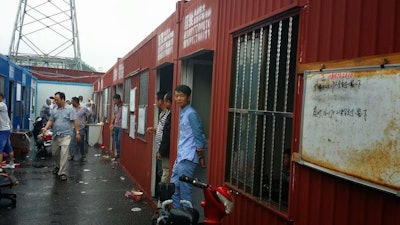

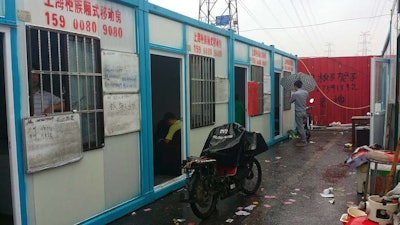
 The “drivers’ lounge” at this truck stop, where drivers can rest and play cards.
The “drivers’ lounge” at this truck stop, where drivers can rest and play cards.
 Though there’s no official store front at the truck stop, one of the shipping containers does house a little shop where drivers can get snacks, drinks and cigarettes.
Though there’s no official store front at the truck stop, one of the shipping containers does house a little shop where drivers can get snacks, drinks and cigarettes.